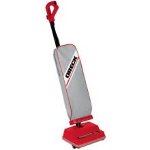Basic Vacuum Repair and Maintenance
Author: steve Published Under: Home
 Elect
Electric motors are used in many different applications, providing consistent and reliable service. They can be found in a number of household appliances and tools, with most of these devices using a universal electric motor.
Universal electric motors are very efficient and can be configured to use either AC or DC current. Since so many household appliances use universal motors, much of the most common electric motor repair will occur on these types of motors.
The Importance or Proper Maintenance
One of the most common uses for a universal motor, which is found in virtually every household, is the vacuum cleaner. Usually when a vacuum cleaner fails, it is because the electric motor was not properly cared for or maintained.
Rather than just throwing away a broken vacuum cleaner or using it until it wears out, some very simple regular maintenance can greatly prolong the life of a vacuum cleaner and bring it back from "death." Many people look for ways of saving money and being frugal, but do not realize that most tools and appliances can be easily and inexpensively repaired.
Inspecting and Dissembling and Upright Vacuum
In most upright vacuum cleaners, the electric motor is located under the hood of the device, which is on the top side of the vacuum cleaner. To begin with, the hood will need to be removed.
Next, locate the bushings, which can be found by following the two electric wires that come from the motor housing. Remove the brush cover using a screwdriver, then remove the two brushes, which will be spring loaded and located opposite from one another.
Once the bushings are removed, it will be possible to remove the top plate from the motor, make sure to apply a drop or two of machine oil to the bearings, which will be exposed when the cover is removed.
To remove the small fan that is located on the top of the armature, it is necessary to hold the opposite end of the armature in place.
To access the bottom of the armature, which is necessary for cleaning, the bottom cover plate must be removed. Usually the bottom cover plate is held in place using a set of spring loaded handles. By depressing the handles, the cover plate should be easily removed.
Once the bottom plate has been removed, the belt should be exposed. At this point, it is a good idea to clean out the area around the belt and bottom of the vacuum. Also, remove and clean the armature.
When reassembling the vacuum cleaner motor, work in reverse order and do not forget to insert the bushings. It may be a good idea to go ahead and replace the bushings, which is not very expensive and the most common part to wear out on an universal motor. Usually busings wear out after 500 to 2000 house of use, but on heavier carpets, they will wear out quicker.
Before reassembling the electric motor, it is very important that all areas are thoroughly cleaned.
Inspecting and Dissembling Tank Vacuum Cleaners
 The electric motor of a tank vacuum cleaner usually feature a slightly different shape and design, but the process to repair and maintenance them is similar. However, there is no belt driven brush on ShopVacs, so maintenance and repair is usually focused on the fan and electric motor.
The electric motor of a tank vacuum cleaner usually feature a slightly different shape and design, but the process to repair and maintenance them is similar. However, there is no belt driven brush on ShopVacs, so maintenance and repair is usually focused on the fan and electric motor.
Hacking Your Vacuum Cleaner
There are actually several hacks that can be applied to most vacuum cleaners to change their performance.
For example, by lowering the voltage that is sent to the motor, it is possible to lower the performance of the motor. This will actually extend the life of the motor, although it comes at the cost of power and efficiency. In most cases, when the speed of the motor is decreased by 50%, it will triple the life of the bushings.
When more power is needed, it is usually possible to combine two or more electric motors.
The two motors can be connected in an air series, which greatly improves vacuum performance, without dramatically affecting the cubic feet per minute of air movement. An air series is achieved by mounting the motors in a long tube. The bottom motor should use a flow through design, while the top motor should use a bypass design, which prevent s the top motor from overheating as a result of the heat of the bottom motor.
It is also possible to connect the two motors in Air Parallel, which involves placing the two motors next to one another. This does not affect vacuum power, but instead substantially increases cubic air per minute of air movement. In an air parallel, the two motors are mounted on the cover of a larger container next to one another, allowing them to work in the same airspace, so this works best with the ShopVac or a similar tank vacuum.